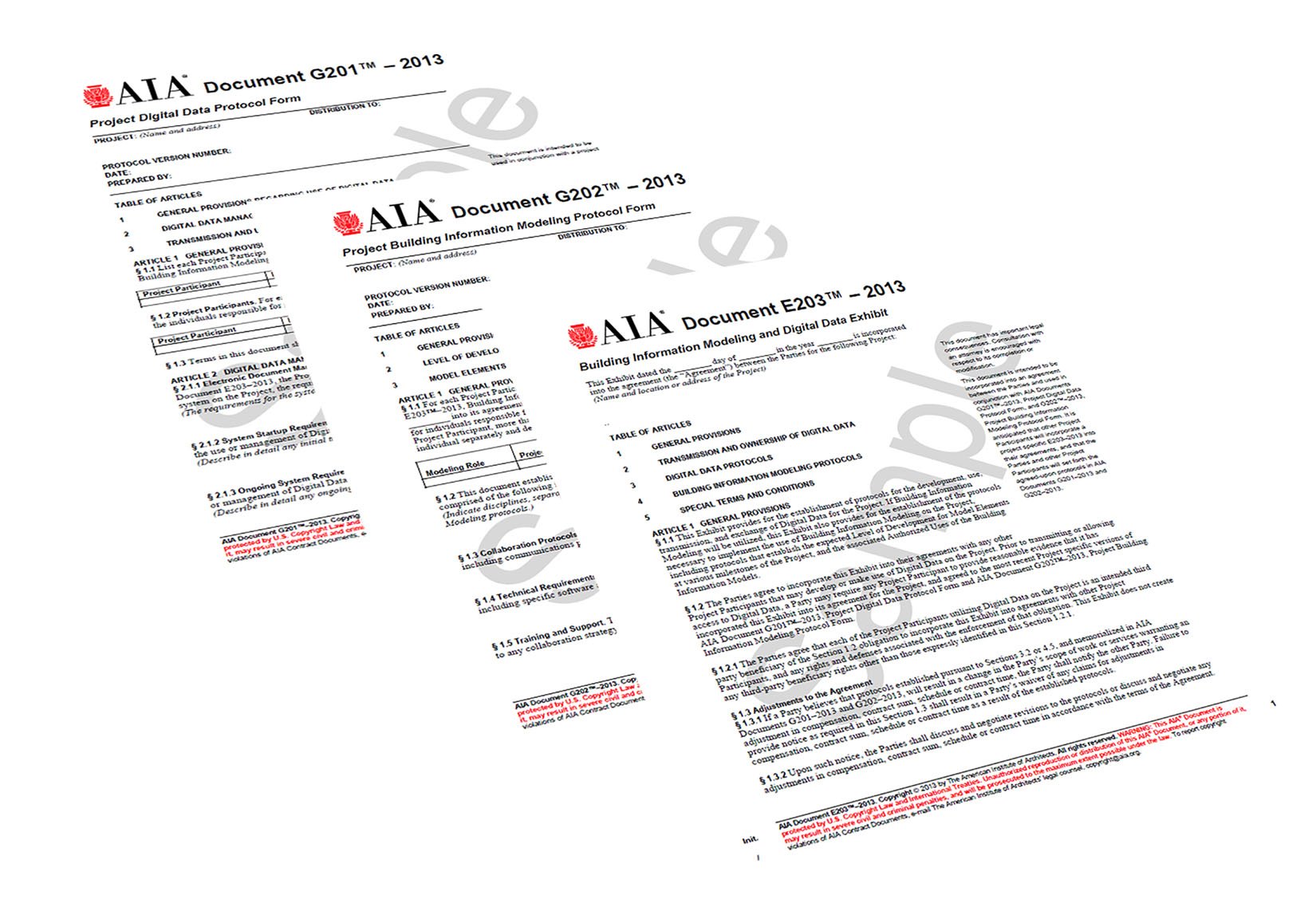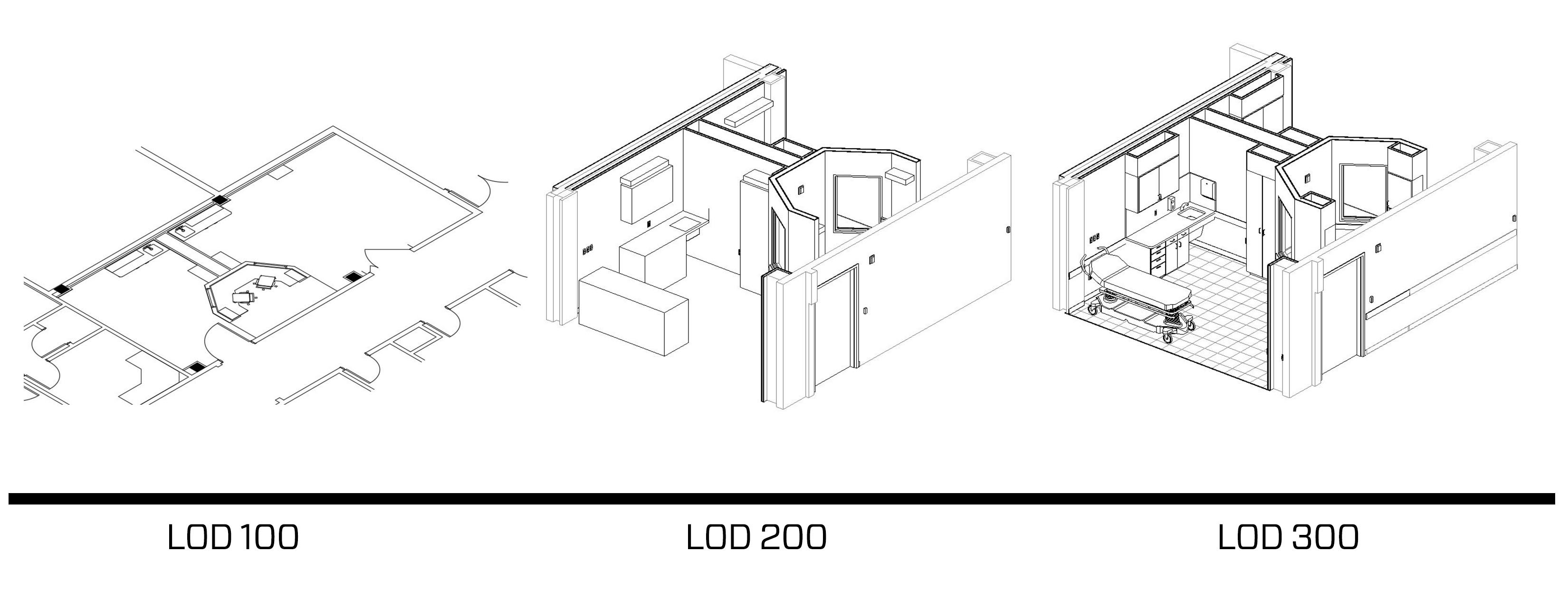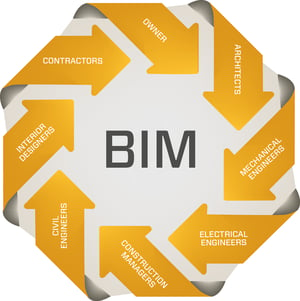As BIM Manager, I relish the opportunity to anticipate where our industry is heading. When asked to explore the effects of the documents that define our model protocols on our delivery process, the AIA G201 and G202, I thought it a great opportunity to demystify contracts and demonstrate how they can be beneficial to the architectural team throughout a project’s lifespan.
Have you considered defining BIM protocol details, such as Level of Development (LOD), ownership and handling of BIM models in your contracts? Have you communicated the extent of the model development to all parties, or defined the reliance of an item and potential limits of that item in the model?
Here are some observations based on experience of reading in-house contracts that concern BIM delivery and the AIA docs.

Contracts Deciphered in the World of BIM
AIA Document E203™ is meant to be an attached exhibit to the executed agreement. The general purpose of the document is to define and delegate responsibilities to various parties involved in the project that will handle the BIM model. These responsibilities include identifying the purpose of use of the model and the extent to which it can be relied upon. Once the agreement and the attached E 203 have been executed, all parties involved contribute to the definition of handling protocols for the BIM model. G201-2013 and G202-2013 are used to document the model protocols. It is important that all parties involved in the contract contribute to the definition of handling protocols for the BIM model. They must define the protocol details, such as LOD, ownership and handling of models. The G201-2013 and G202-2013 that define the protocol details can be completed at a later date, after the contract and E203 have been executed. Due to the fact the G201 and G202 are not part of the executed contract, their protocols can be adjusted as necessary without the need to formally amend each parties’ agreement. Understanding that Revit models can take on different ramifications and that by defining certain protocols we limit liability is essential.
Level of Development 
Since multiple LOD-level components can live in a design phase, the LOD is not defined by design phases. As an example, a Design Development (DD) submission can have elements such as movable furniture at level 100 and built-ins at level 300. There are two objectives to defining the LOD in a project. One is to communicate the extent of development to all parties, the second is defining the reliance of an item and potential limits of that item in the model. It is important to understand that each Revit element, as well as each grouping of typical Revit elements, can evolve at a different rate. Therefore, defining the level of development of a repetitive item or group, such as a typical exam room or items within modular construction is just as important as defining the LOD for client-provided office equipment that is not in scope.
Addressing Responsibilities Across the Board and Over Modeling Issues
 Over modeling has long been a factor which affects not only model LOD but also your companies’ profits. By defining the LOD early on in the project and making that information available to all the members involved in a project, not just project managers, a firm can increase profits in reduced work which otherwise might not have been required for a particular submission level. By defining who has responsibility for which model items adds to the increased profits simply because an item can be linked into the architectural model from a consultant rather than be modeled by the architectural firm. For instance, a furniture item doesn’t need to be modeled extensively by the architectural team if there is a furniture consulting firm doing that package.
Over modeling has long been a factor which affects not only model LOD but also your companies’ profits. By defining the LOD early on in the project and making that information available to all the members involved in a project, not just project managers, a firm can increase profits in reduced work which otherwise might not have been required for a particular submission level. By defining who has responsibility for which model items adds to the increased profits simply because an item can be linked into the architectural model from a consultant rather than be modeled by the architectural firm. For instance, a furniture item doesn’t need to be modeled extensively by the architectural team if there is a furniture consulting firm doing that package.
Remember these tips and you’ll breeze through the legal meetings and better understand what your BIM submissions imply:
- Understanding the implications and responsibilities of the Revit model in the framework of business operations.
- Exploring standard contract wordings.
- Addressing responsibilities across the board and over-modeling issues.
Learn more about Building Information Modeling by reading our blog, Achieving BIM Nirvana.

